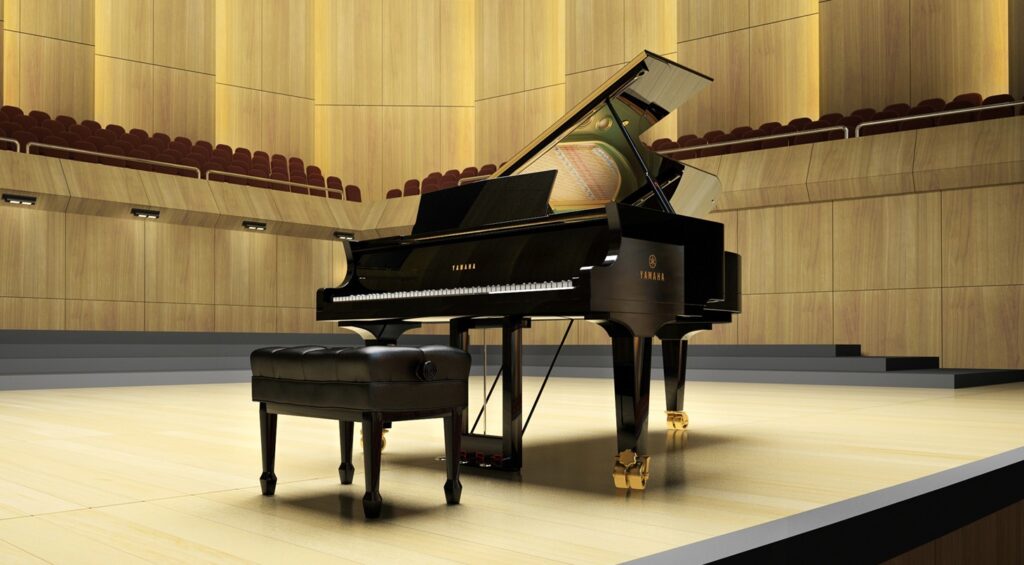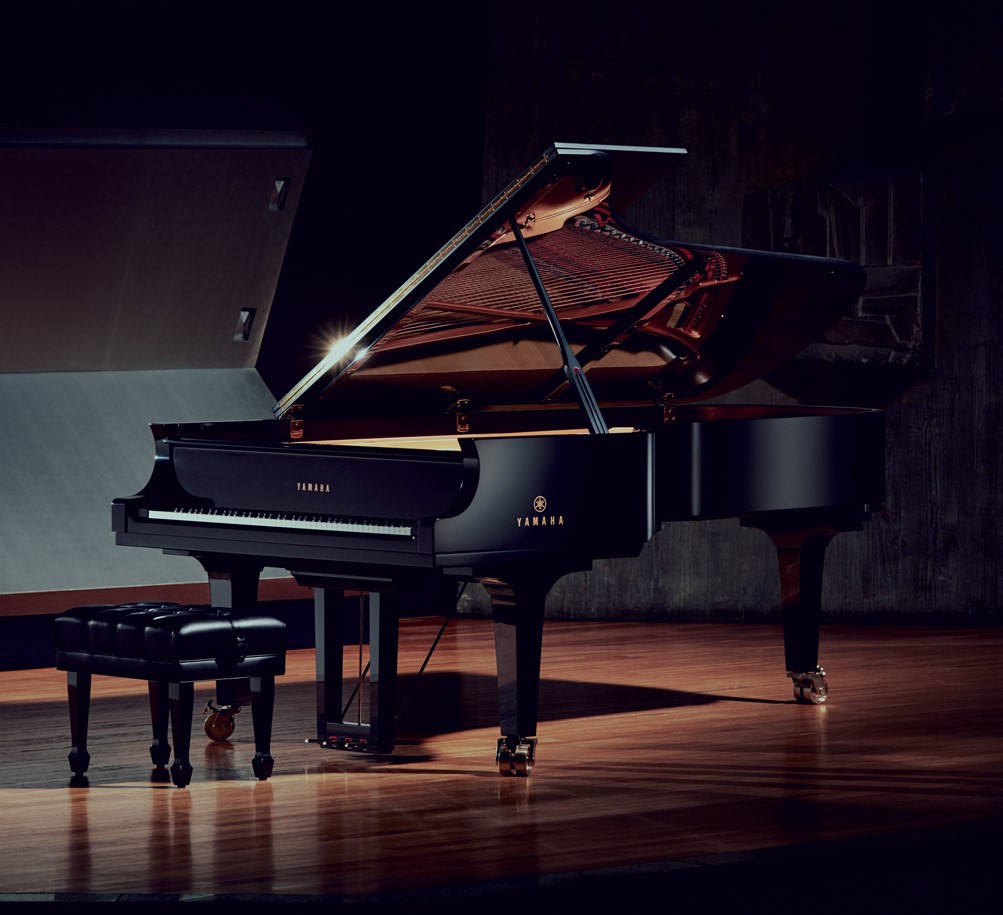The History of Disklavier, Part 1
The birth of the world’s most advanced piano.
The history of the piano is a history of technological change and innovation, starting over 300 years ago with the escapement action of Bartolomeo Cristofori and continuing with knee levers, pedals, action modifications, cast iron frame, and so much more. This dynamic history has been the result of the passionate interaction between keyboard players, composers, and instrument makers.
In the 1970s, solenoid-based player systems were added to pianos for the first time. In 1987, Yamaha took that concept to a new level of quality and ease of use by introducing the Disklavier reproducing piano to North America.
The term Disklavier is a clever combination of the words disk (as in floppy disk) and Klavier, the German word for keyboard. At the time that the Disklavier was introduced, recordings were stored on 3½ inch floppy disks.
The Disklavier is fundamentally a traditional, acoustic piano with a built-in record-and-playback system. The record-and-playback system and its related features have changed substantially over the years, but one aspect of the Disklavier has remained constant: The Disklavier system has always been offered as a factory-installed system – never as a retrofit for existing pianos.
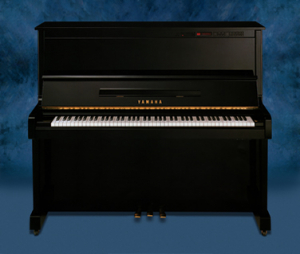
MX100A and MX100B (1987)
The first model Disklavier was the MX100A, which was available in a studio model upright called the U1. The control unit was built into the cabinet.
The MX100A featured a remarkably sophisticated recording system for its day, a system that included hammer sensors — an innovation that was not available on most player piano systems from other companies at that time. Pedal sensors on these early instruments, however, were limited to recording only two values: on and off (or fully down and fully up).
This early Disklavier model included fundamental features that have been included on every Disklavier since - such as tempo control, transposition, and connectivity with external MIDI devices.
In a short period of time, the MX100A was superseded by the MX100B. The most noticeable difference was the color of the LED display on the control unit, which was changed from red to green.
Both the MX100A and the MX100B pre-dated the industry-standard song file format known as Standard MIDI Files (SMF), which is the format used today. For this reason, these early Disklaviers recorded in the proprietary MIDI format from Yamaha known as E-SEQ. Although modern Disklaviers do not record in E-SEQ format, they will read this older type of song file and even convert E-SEQ to SMF. E-SEQ song files were stored on double-density (DD) 3½ inch floppy disks.
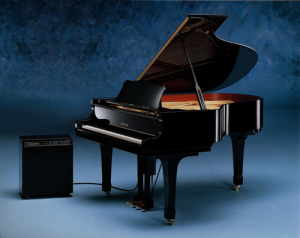
Wagon Grand
Starting in 1989, Yamaha began marketing the Disklavier system in the various grand piano models that were available at the time. The control unit had a rather substantial power supply that required it to be housed in a 30" cabinet on wheels that was often referred to as a wagon. Lacking a more formal model designation, these instruments became informally known as Wagon Grand Disklaviers.Like the MX100A and MX100B, the Wagon Grand provided hammer sensors. It also featured 16 increments of pedal recording — an important step forward in the evolution of the instrument. Like the MX100A and MX100B, the Wagon Grand recorded on DD floppy disks in E-SEQ format.
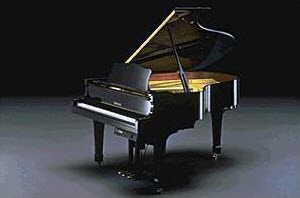
Mark II and Mark IIXG (1992)
A number of consumer and standard models of Disklavier were introduced in the early-to-mid 1990s. Most noteworthy were the Mark II and Mark IIXG systems. These were available in the studio model and U1 upright, as well as in most sizes of grand pianos.The first of these was the Mark II, which made its debut in 1990. In the case of the upright version, the control unit was built into the cabinet, as it was in the case of the MX100A and MX100B. The Mark II control unit, however, was much more sophisticated, offering many more options for copying song files, MIDI configuration, and so forth. The instrument recorded on DD floppy disks in E-SEQ format, but was able to play song files in the SMF format known as Type 0.
The Mark II control unit for grand pianos did not have a wagon control unit. Instead, a relatively small control unit was devised for this instrument and mounted under the keys.
The Mark IIXG followed the Mark II in 1992. Its control unit was a bit smaller but was packed with many new features, including:
– Built-in tone generator with 128 General MIDI (GM) voices and drum kit, as well as the Yamaha extended GM voice set known as XG.
– Multitrack recording.
– Recording in SMF Type 0 format.
– Playback of both SMF Type 0 and Type 1 song files.
– Support for both DD and HD (high density) floppy disks.
– Conversion of song files between E-SEQ and SMF.
– Built-in memory for storing song files.
– More features for song file management.
– Improved support for MIDI interaction with computers.
– Support for future firmware upgrades.
During the 1990s, it was possible to obtain a kit that would upgrade a Mark II to a Mark IIXG.
Disklaviers with Silent Systems
During the era of the Mark II and the Mark IIXG, a number of upright (U1) versions of the Disklavier were introduced that were equipped with a Silent system. This system provided a mute rail that, when engaged, would allow a full keystroke but prevent the hammer from hitting the string. This made it possible for a pianist to play the instrument with headphones on, listening to an advanced digital piano sample.
The Silent system was not available in grand piano models until the Disklavier PRO was released.
Want to continue learning about the History of Disklavier? Check out the next chapter (second of four) available here.
You can also keep up with the latest at our dedicated site for Yamaha Disklavier.












